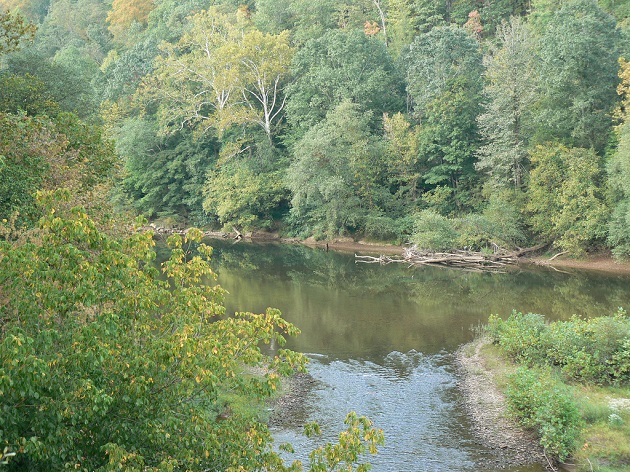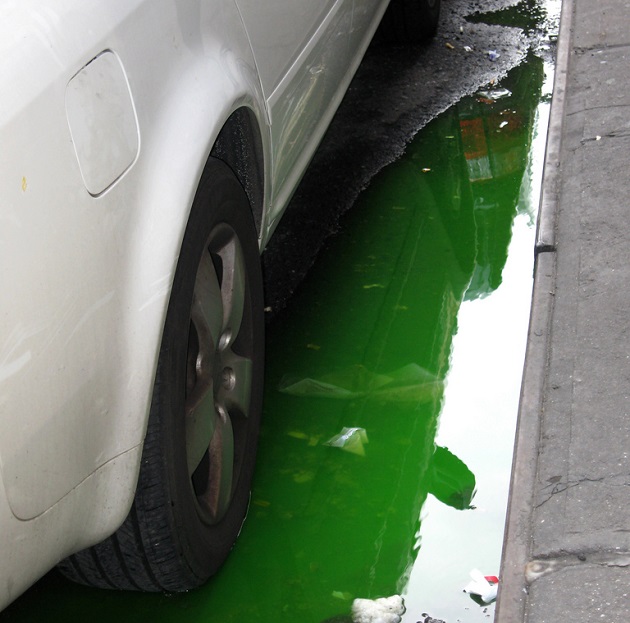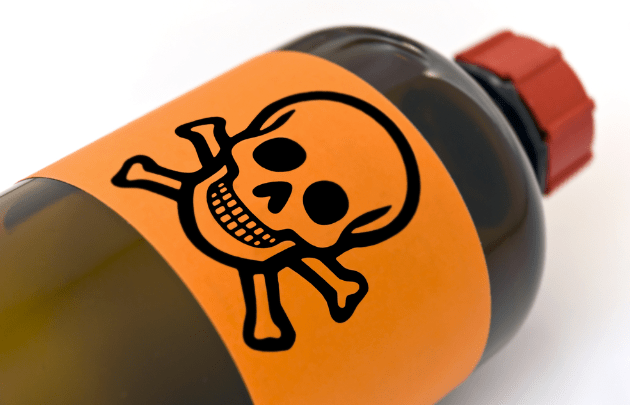
The Elk River in Clay County, West Virginia, one of the counties under a water advisory in the wake of a chemical spill.<a href="http://www.flickr.com/photos/tgaw/2877797054/sizes/l/">Vicky TGAW</a>/Flickr
The chemical that leaked yesterday into a West Virginia river “hasn’t been studied very well,” says Deborah Blum, a New York Times science columnist who specializes in reporting on chemistry.
A state of emergency was declared for nine West Virginia counties yesterday after a chemical called 4-Methylcyclohexane Methanol spilled into the Elk River. The chemical is “used to wash coal of impurities,” according to the Times.
The chemical leaked from a holding tank owned by a company called Freedom Industries, according to West Virginia American Water, a water company operating in the region. At present, the nine counties are under a “do not use” advisory from West Virginia American Water, and residents there do not know when they will be able to turn on their taps.
A rush on bottled water subsequently ensued, as documented in this tweet from a local news anchor:
Rite Aid on Washington St. West in #Charleston out of water #eyewitnessWV after chemical leak pic.twitter.com/GUIWdxOi1h
— Elizabeth Noreika (@enoreikaWCHS) January 9, 2014
Undoubtedly much more information will emerge on 4-Methylcyclohexane Methanol and how dangerous it is (or isn’t) in water. But to start things off we turned to Blum, who was just a guest on our Inquiring Minds podcast.
“We know methanol is toxic, we know that methylcyclohexane is moderately toxic, but I haven’t seen a full analysis of the entire formula,” says Blum. “Still, I think we can assume there’s nothing here that we’d want to drink or like to see in our rivers.” However, given that it is in the Elk River it will be “very diluted,” she added, and likely will ultimately be broken down and digested by microbes. In the meantime, Blum praised authorities’ cautionary approach.
The fact that relatively little is known about the compound, says Blum, represents “another reminder that we have way too may poorly researched compounds in the toxic registry and we desperately need to update our creaking regulations regarding industrial materials.”
For our recent podcast with Deborah Blum, you can listen here:














